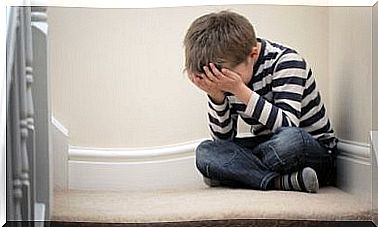Headaches After Childbirth: Everything You Need To Know

Headaches in the time after delivery (a period known as postpartum) are one of the biggest discomforts of this stage. Symptoms can vary in intensity and in some cases become so intense that they interfere with daily life. There are many causes that can cause postpartum headaches.
We have therefore summarized the main causes in this article. Some are a natural result of childbirth or anesthesia and others are related to certain diseases. Want to know more about headaches after childbirth? Then keep reading!
What Can Cause Postpartum Headaches?
Below we will talk about some of the most common triggers of this symptom, which in some cases can affect other populations as well.
tension headache

Tension headaches are one of the most common conditions in the general population. For this reason, women may experience them during the immediate postpartum period (i.e. the first 24 hours after delivery). This makes sense, given the causes of this condition.
According to a publication of the US National Library of Medicine , this pain is a result of the persistent contraction of the neck muscles.
While not all mothers suffer from this condition, stress, temperature changes, and prolonged exposure to awkward positions are factors that can promote the onset of this clinical condition.
Headaches after childbirth: migraines
It is common to confuse the term migraine with any type of headache. However, the truth is that migraine headaches are a chronic disease and are different from tension headaches. Migraines are characterized by intense, long-lasting pain (even more than 24 hours) and are sometimes accompanied by sensory disturbances called auras .
This is a condition that usually occurs in adolescence, so in most cases mothers will already be aware of their diagnosis before delivery.
According to a Mayo Clinic publication , there are many triggers for migraine attacks. The most common are sleep problems, stress, and exposure to certain medications.
In rare cases, a phenomenon known as migralepsy can occur. As discussed in this case report (Spanish link), affected patients often have seizures along with pain. This usually leads to hospitalization to determine the causes of the disease.
Elevated blood pressure, one of the causes of headaches after childbirth
Are you familiar with the term preeclampsia? It is one of the most common complications of pregnancy. It is characterized by a dangerous and persistent increase in blood pressure, causing various symptoms such as swelling of the lower extremities, production of foamy urine and headache.
According to this scientific assessment (Spanish link), most cases occur after the first 48 hours after delivery. Some of these patients may have had preeclampsia during pregnancy, although others may debut after the baby is born. In this case, the condition is known as postpartum preeclampsia.
This is a condition that usually requires hospitalization. That’s because even though the pregnancy is over, it can still cause problems in the mother’s body. Strokes are an example of this, although they are usually rare.
Postnatal depression

Postpartum depression is a condition that can become disabling for some who experience it. While the primary symptoms are a feeling of deep sadness, somatic or physical symptoms can also occur.
According to a publication in the MSD Handbook , headaches are among the rare symptoms of this condition. Pain can also involve other parts of the body, such as the back, which can contribute to the general state of apathy that is characteristic of this type of depression. Other notable symptoms include fatigue, sleep disturbances, loss of appetite and eventually suicidal thoughts.
An adverse effect of anesthesia during labor and delivery
Mothers who require or request epidural anesthesia during labor are usually informed about the potential complications of this procedure. One of these is a severe headache during the postpartum period, which is also common in patients who require a diagnostic lumbar puncture.
According to a scientific study (Spanish link), headaches after a puncture usually appear in the first five days after the birth of the baby. Patients usually experience some improvement when lying down, while walking can be quite uncomfortable.
Headaches after childbirth usually do not go unnoticed
While it is common to deal with headaches throughout life, postpartum headaches can become really bothersome. Not only because of the fact that a woman has to focus all her attention on her newborn baby, but also because the symptoms of the above conditions are usually quite intense.
Fortunately, there are a large number of pain-relieving drugs that can provide clinical improvement. While most medications usually don’t cause any problems while breastfeeding, it’s always important to have a medical evaluation and proper instructions.









